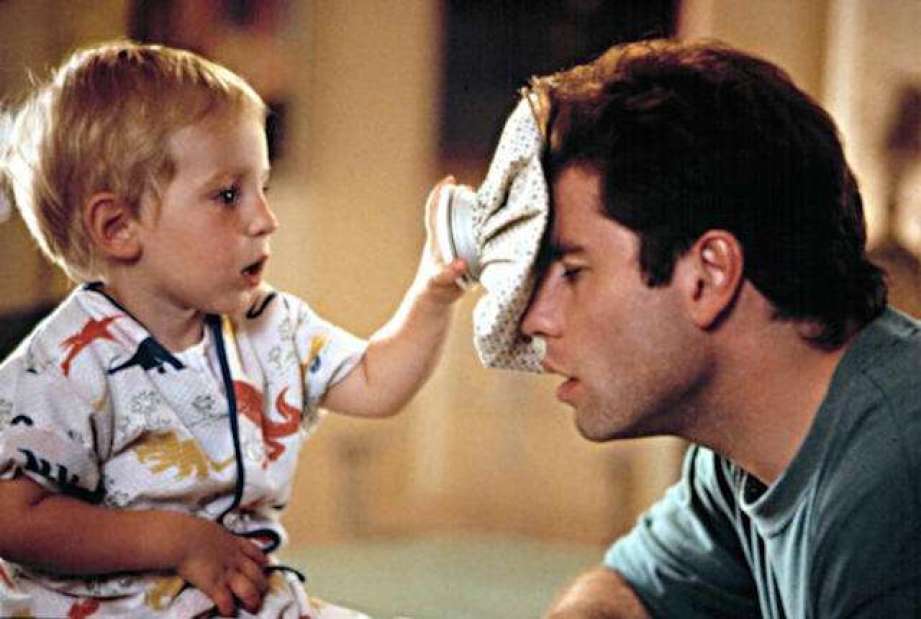By Andrea Thompson
When a film critic who specializes in writing about women in pop culture wants to start the new year off right, what exactly does she do? In my case, she decides to take the 52 Films By Women pledge, wherein the pledgee commits to watching at least one film a week that was directed by a woman.
But what to watch first? To kick off such a big undertaking, I wanted to watch something I knew would be fun, yet not too familiar. So I did what I usually do when I want film recommendations, and asked the ladies of Film Twitter for ideas. I soon got a lot of great ones, one of the most popular being Amy Heckerling's 1995 smash hit “Clueless.” It's one of those results that's hardly any less welcome for being predictable, but I know that movie a little too well (if that's even possible). And so much has been written about it, there hardly seemed more to add, what with there being an oral history now.
But I remembered enjoying another, lesser-known film Heckerling made between two of her most iconic ones, the aforementioned “Clueless” and “Fast Times at Rdgemont High,” which was the 1989 comedy “Look Who's Talking.” It was about a woman named Mollie, played by Kirstie Alley, who gets pregnant and rejected by her married lover, then connects with smooth-talking cab driver James, played by John Travolta. Providing commentary throughout (from womb to roughly toddler age) is Mollie's son Mikey, voiced by Bruce Willis, who doesn't even try to sound like a kid. Yet Mikey still remains an adorably watchable presence, even if babies hardly have to do more than just look cute on-screen to hold our attention.
The movie was successful enough to spawn two sequels, each of which failed to fully capture what made the original so damn fun. Yet the first still retains its charm, albeit in a rather predictable way. Mollie is the funny, deeply imperfect heroine who can't seem to see that the guy who's perfect for her has been right in front of her the whole time. She and James come together, are in danger of breaking apart, then finally unite at the end. The journey may be familiar, but it has a few more unique touches than we typically see even today.
For one, there's Mollie's job. Mollie doesn't have a job that's overly glamorous or demeaning. She doesn't work at a restaurant, in event planning, fashion, or even a shiny media workplace. So nope, no concerns about publishing, the state of TV, and thank god, no women's magazine that purports to be feminist while reinforcing the same old regressive messages. So what exactly does she do? She's an accountant, and her job is just that, a job she's good at that allows her to earn a good living. Moving up or finding another profession isn't a concern for her.
And Albert (George Segal), that married lover of hers? He's an executive who's not only married, he has kids. Wow. Even when Carrie cheated with Big in Sex in the City, there were no children involved. We never see the wife, but in a rather bold move, the movie does briefly show Albert with one of his kids, while Mollie is spying on him no less. Rather than this being a turning point wherein she contemplates how her actions might wreck this child's relationship with her father, Mollie chooses to dwell on how good Albert seems with his daughter. Such is the charm of Heckerling's script and Alley's comic chops that this moment manages to come off as funny rather than horrifying.
Heckerling is able to pull this off (and more) mostly because her voice remains so strong throughout. It's very evident she wrote “Look Who's Talking” in addition to directing it. Or perhaps it's more accurate to say that a woman who knows what pregnancy is like had a large role in shaping this film. Unlike many movies today, which turn pregnancy symptoms into gross-out humor, the jokes in “Look Who's Talking” come from the woman's view of what's happening to her body, not a male writer trying to use humor to deal with his discomfort over how a pregnancy conflicts with everything a woman is supposed to be. When Alley gets morning sickness, she doesn't vomit on anyone. When she can't stop eating, it isn't viewed as disgusting. When her breasts become enlarged, rather than being used as fuel for schtick, it's humorous because she looks so unlike herself. The movie even briefly mentions postpartum depression and does kind of a good job making it funny.
But one of the most striking things about Look Who's Talking is its casual depiction of how men feel entitled to comment on how women live their lives. When she is on the way to the hospital and experiencing her first pains, people constantly instruct her about Lamaze breathing, and how much better it is for the baby rather than drugs. She is really the only one who takes her pain seriously. It reminded me of my mother's stories of giving birth to my sister, and how she had to grab the doctor by the collar in order to get pain-reducing meds. It leads to a very funny baby stoner scene. Just trust me, it works. There really was a time when people weren't quite so hysterical about baby health.
However, what really makes the movie unique is Mollie's love interest. John Travolta's James is a cab driver who drives her to the hospital as she's going into labor. He escorts her in, so James is assumed to be the father and ends up witnessing Mikey's birth. It's one of the more unusual meet-cutes, and they only end up meeting again afterwards because they decide to use each other. Mollie leaves her purse in the taxi, and James uses her address to fraudulently establish residency so he can put his grandfather in a good care home. Mollie decides to allow this, but only if Travolta agrees to babysit Mikey, and their resulting scenes together become some of the film's highlights. James isn't exactly an unambitious slacker; he has dreams of becoming a pilot. But he's also a bit of a hustler who's developed a number of tricks to avoid paying for anything. In any other film, James would be the bad boy who keeps Mollie hooked and unable to see the dreamy rich guy who could give her the life romcoms dream of. But it's James who turns out to be the responsible one who Mikey ends up seeing as a father, while Albert is the uncaring womanizer who refuses to be there for either Mollie or Mikey.
Perhaps this lack of concern for time-honored tradition was the reason “Look Who's Talking” received such mixed reviews. Most of them seemed to focus on the opening scene of the talking sperm who all journey towards the egg in the conception scene. It's an early indicator that the movie doesn't intend to take the male ego, pregnancy, or sex that seriously. Sure, “Look Who's Talking” is predictable in many ways, but critics have lauded other movies with that quality if they were enjoyable, which this movie is. Most just didn't seem to find the screwball antics funny even if they did happen to enjoy the performances. But the main, unspoken reason for the lack of appreciation seemed to be Heckerling's complete lack of interest in soothing the male ego, and perhaps that's what so many male critics found frustrating. This is a comedy about a deeply imperfect woman finding her happy ending in a New York that comes off as livable. It's telling that none of the characters are artists, or trying to be. They're just living regular lives, and she made that funny and interesting.
When asked in 2012 about about the fact that “only 5% of movies are directed by women,” Heckerling responded, “It’s a disgusting industry. I don’t know what else to say. Especially now. I can’t stomach most of the movies about women. I just saw a movie last night. I don’t want to say the name – but again with the fucking wedding and the only time women say anything is about men.”
Yet Heckerling managed to make movies that took women and their concerns seriously. Now that the industry is, or seems to be, undergoing some radical changes, hopefully films like hers won't be considered a rarity for much longer.




